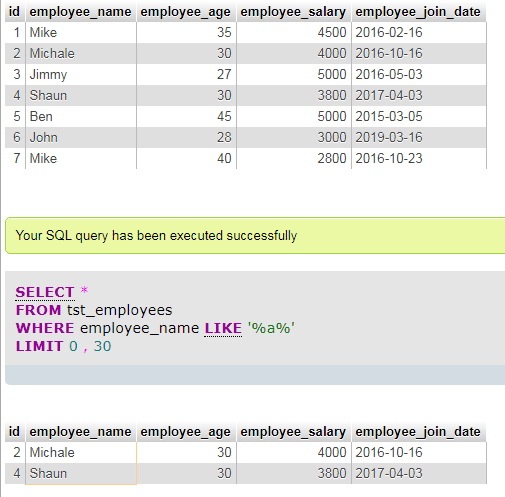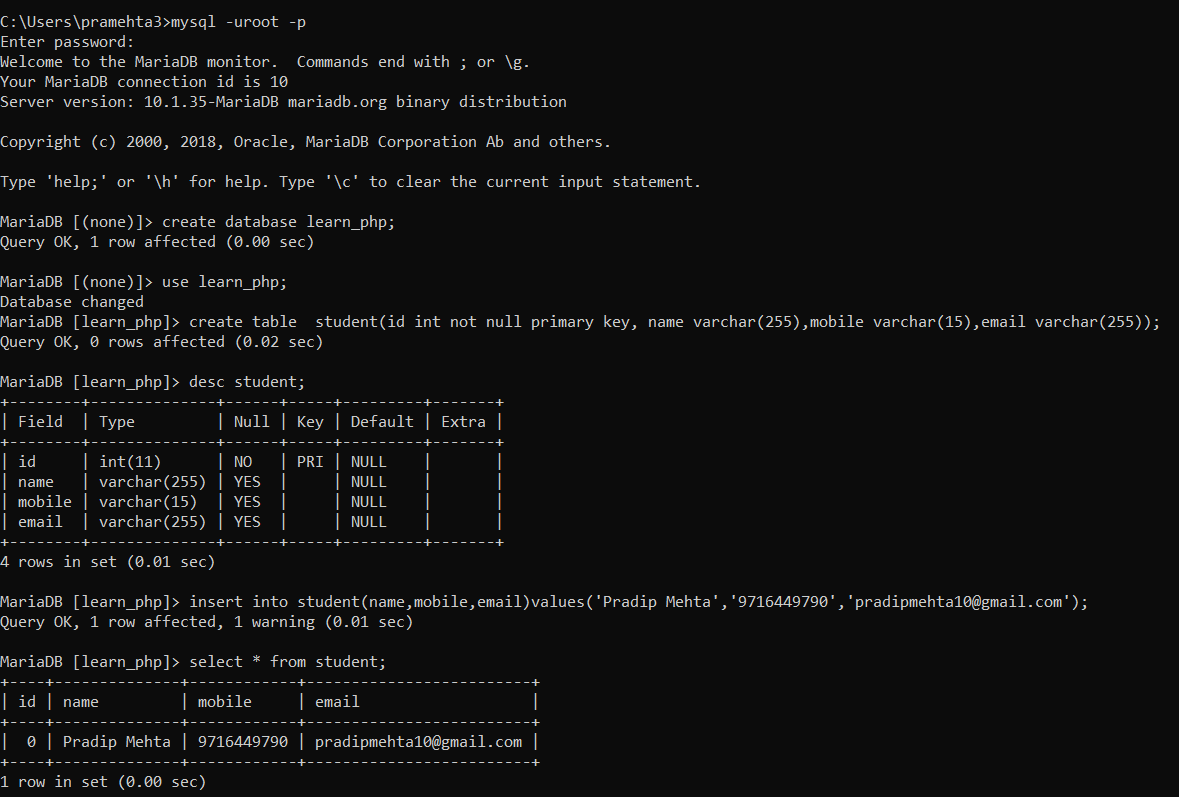
You can also specify specific fields in the table.
MYSQL LIKE CODE
The following code is a simple MySQL statement that retrieves all records from the MySQL table named customers: select * from customers Regardless of how many tables you want to search, the not like statement is in the search phrase’s where clause, which you can set up after you create a basic MySQL statement.Īfter you figure out the tables you want to search, set up a basic MySQL search query. You can search only one table, or you can use a MySQL join statement to search multiple records that “connect” to each other between each table. The first step in creating a MySQL not like statement is first determining what tables you want to search. The not like statement is not used as much as other statements, but it’s used to filter out records after they have been retrieved from the database tables. When you’re learning the MySQL language, there are certain where clauses you need to know, and the “not like” statement is used enough where it should be a part of your common MySQL query statement knowledge. The not like statement is different from the equals statement, because the equals statement requires that you enter an exact value found in the MySQL table field.

The advantage of using the like statement is that you can use wildcards, so you can search for a range of values or values that match a pattern. It searches records that do not match the value in the not like clause. The not like statement does exactly what it sounds like it does. To find out what else this language can do, you might want some MySQL Training for Beginners. The advantage is that you can find records that you need to edit or report on a spreadsheet. The feature is essentially the opposite of find a list of matching values, which means you can get two recordsets: a recordset with matching values and ones that do not have the values.

However, the MySQL programming language also has a way to find records that do not match a specific value. Your commands may vary depending on your OS.When developers think of searching records in a database, they often think of finding matching values whether they are numerical, calculated values or a matching string of characters. # Switch back to the mysqld_safe terminal and kill the process using Control + \
MYSQL LIKE UPDATE
Mysql> UPDATE er SET password=PASSWORD('new_pass') WHERE user='root'
MYSQL LIKE PASSWORD
Reset Root Password $ /etc/init.d/mysql stop Ex: VARCHAR(32), TINYTEXT, LONGBLOB, MEDIUMTEXT ENUM ('value1', 'value2'. Variants for TEXT&BLOB: TINY (max=255), MEDIUM (max=~16000), and LONG (max=4Go). TIMESTAMP (like DATETIME, but 1970->2038, compatible with Unix) ⚠ INT(2) = “2 digits displayed” – NOT “number with 2 digits max” FLOAT(M,D) Restore from backup SQL File mysql -u Username -p dbNameYouWant (2^8*N)-1 Ĭreate / Open / Delete Database CREATE DATABASE DatabaseName ĬREATE DATABASE DatabaseName CHARACTER SET utf8 ĪLTER DATABASE DatabaseName CHARACTER SET utf8 īackup Database to SQL File mysqldump -u Username -p dbNameYouWant > databasename_backup.sql FROM t1 LEFT JOIN t2 ON t1.id1 = t2.id2 WHERE condition

FROM t1 JOIN t2 ON t1.id1 = t2.id2 WHERE condition WHERE condition ORDER BY field1, field2 DESC WHERE condition GROUP BY field HAVING condition2

SELECT field1, field2 FROM table1, table2


 0 kommentar(er)
0 kommentar(er)
